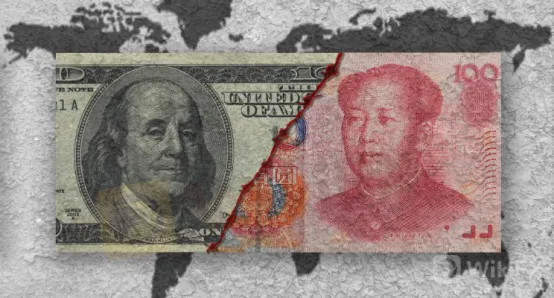freemexy's blog
In an environment where many major currencies are range-bound, the British Pound has put in a recent streak of weakness.To get more news about WikiFX, you can visit wikifx news official website.
Brexit remains as a driver but the notable item from this week was talk of potentially negative interest rates in the UK.
Next weeks economic calendar is rather light on high-impact
data releases, pointing to the possible continuation of risk themes as a
primary driver.

GBP Bounces After Last Weeks Support Breaks
It has so far been a brighter outlay this week for the British Pound as the currency has bounced against both the US Dollar and the Japanese Yen. Last week was marked by weakness in Sterling as sellers pushed each of those pairs down to fresh monthly lows; but at least a portion of that has been offset this week as both GBP/USD and GBP/JPY have thus far put in net gains, even as talk of negative interest rates from the BoE began to circulate through the headlines.
This dynamic isnt necessarily discounting the prospect of negative
interest rates as much as it may be driven by a related theme in risk
markets. As discussed on the topic of Gold and then US equities, an
interview from FOMC Chair Jerome Powell that was broadcast on Sunday
night has helped to add some heat to the current risk rally, and this
looks to have taken a toll on both the US Dollar and Japanese Yen
getting hit with another bout of weakness; which has helped to buoy both
GBP/USD and GBP/JPY.
In Cable, the big question is whether sellers are going to react to
that next spot of lower-high resistance, and there‘s a few possible
areas where that may develop: From the below chart current support
showed up around the 38.2% retracement of the March major move; and the
50% marker from that same study is very nearby, just above the 1.2300
handle. That area helped to provide a couple of spots of support in
late-April and then again in early-May. Above that, the 61.8%
retracement lines up very closely to the 1.2500 level, producing an
element of confluence that may constitute an ’r2 zone of resistance.
Make sure to keep your chips at the critical moment.
After
the 2008 financial crisis, the whole world is afraid of whether there
will be another financial crisis similar to that of 2008. When the
crisis really comes, people are still unprepared and unable to deal with
it. What is the real danger? The largest economy starts to divide due
to trading, the whole country was hit by COVID-19. An uncoordinated
policy response between countries will prolong economic weakness and
trigger a new round of currency war.Trade war, that means two or more
countries have a conflict of trade taxes with each other. Generally, a
country implements trade war in order to raise tariffs against other
countries and expand its own exports. If the countries involved refused
to compromise, they will face further increase of export tariffs.
Currency war means that countries maximize their benefits through their own currencies, usually by devaluing their currencies to stimulate exports and gain benefits from the exchange rate. When countries begin to devalue their currencies competitively, global currency wars and exchange rate wars will break out.To get more news about WikiFX, you can visit wikifx news official website.
What's your leverage?
With the quantity of COVID-19 confirmed cases keep raising, the market investors have an unprecedented sense of urgency.
According
to an analysis by MSIC, so far, global stock markets have fallen nearly
20 percent as a result of the spread of the COVID-19 epidemic and the
collapse in oil prices, and volatility is expected to soar to more than
40 percent. It remains to be seen whether the crisis will follow a
pattern similar to that of the past.
Underthe epidemic, major central banks around the world have begun to act.
The Fed cut interest rates by 50 bp and 100bp in a row, lowered the target range of the federal funds rate to 0- 0.25 percent, announced a new round of quantitative easing (QE) of $700 billion and cut the discount rate for emergency loans by 125bp. According to incomplete statistics, in addition to the Federal Reserve, more than a dozen central banks, including the Bank of Australia, the Bank of Canada and the Bank of Korea, have also entered the ranks of interest rate cuts.
Although the European Central Bank and the Bank of Japan, which are already in negative interest rates, did not cut interest rates further, they both stepped up quantitative easing. The ECB added an additional 120 billion euros in asset purchases until the end of the year, while the Bank of Japan announced an Y6,000bn increase of its annual ETF purchase target to Y12 trillion and a raise of the Japanese real estate investment trust (J-REITs) purchase target to Y180 billion.
It is worth noting that at present, a single monetary policy is no longer enough to boost market confidence. At present, the Fed is only one step away from negative interest rates, and there is a lot of speculation that the Fed will join the camp of negative interest rates in the future. However, whether negative interest rates can effectively boost the economy is still controversial, and the policy has also been criticized by many parties. The traditional monetary policy system, represented by the Federal Reserve, has been in trouble. Although extraordinary policy stimulus has become the norm, it cannot fundamentally break the situation and will deepen rather than alleviate the hidden risks.
Judging
from the fiscal measures of major economies, the US Congress has passed
an $8.3 billion bill to deal with the COVID-19 epidemic, and the Trump
administration is planning to launch a nearly $1,000bn economic stimulus
policy. Canada has also announced a new fiscal measure of C$1.1
billion. South Korea's parliament approved a supplementary budget of
11.7 trillion won to deal with the impact of the epidemic on the economy
and support fragile businesses and domestic consumption.
